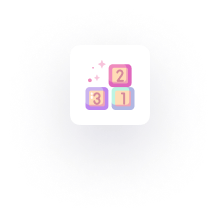As a Golang developer, exploring advanced Go constructs allows you to tackle more complex challenges and design more sophisticated software systems. Let's look at three essential advanced Go constructs: Context, Concurrency, and Generics.
Context
Go's context package provides a powerful mechanism for managing the lifecycle and cancellation of operations. It allows you to pass context between different goroutines to handle cancellations, timeouts, and request-scoped values.
The context.Context type typically carries deadlines, cancellation signals, and request-scoped data across API boundaries. It is especially crucial when you need to manage the flow of operations in concurrent systems or distributed applications.
package main
import (
"context"
"fmt"
"time"
)
func worker(ctx context.Context) {
for {
select {
case <-ctx.Done():
fmt.Println("Worker: Received cancellation signal.")
return
default:
// Do some work...
fmt.Println("Worker: Working...")
time.Sleep(1 * time.Second)
}
}
}
func main() {
ctx, cancel := context.WithTimeout(context.Background(), 3*time.Second)
defer cancel()
go worker(ctx)
time.Sleep(5 * time.Second)
fmt.Println("Main: Timeout reached. Cancelling worker...")
}
Concurrency
Go's support for concurrent programming using goroutines and channels is one of its most powerful features. Goroutines allow you to run functions concurrently, while channels facilitate communication and synchronization between goroutines.
Concurrency enables you to achieve parallelism and perform tasks concurrently, leading to improved performance and resource utilization in software systems.
package main
import (
"fmt"
"sync"
)
func printMessages(messages chan string, wg *sync.WaitGroup) {
for msg := range messages {
fmt.Println("Received:", msg)
}
wg.Done()
}
func main() {
messages := make(chan string)
var wg sync.WaitGroup
wg.Add(2)
go printMessages(messages, &wg)
go printMessages(messages, &wg)
messages <- "Hello"
messages <- "World"
close(messages)
wg.Wait()
}
Generics: Do We Really Need Them?
Generics in Go have been a long-awaited feature to enable writing more generic and reusable code. As of Go 1.18, generics have been introduced, allowing developers to define functions and data structures that work with different types.
Generics offer more flexibility and expressiveness, but Go's simplicity and lack of generics have been part of its charm. The introduction of generics may come with language complexity and maintainability trade-offs.
package main
import "fmt"
func findIndex[T any](slice []T, element T) int {
for i, item := range slice {
if item == element {
return i
}
}
return - 1
}
func main() {
numbers := []int{1, 2, 3, 4, 5}
index := findIndex(numbers, 3)
fmt.Println("Index of 3:", index)
strings := []string{"apple", "banana", "orange"}
index = findIndex(strings, "banana")
fmt.Println("Index of 'banana':", index)
}
As you explore these advanced constructs, you'll be better equipped to design scalable, efficient, and maintainable applications.


